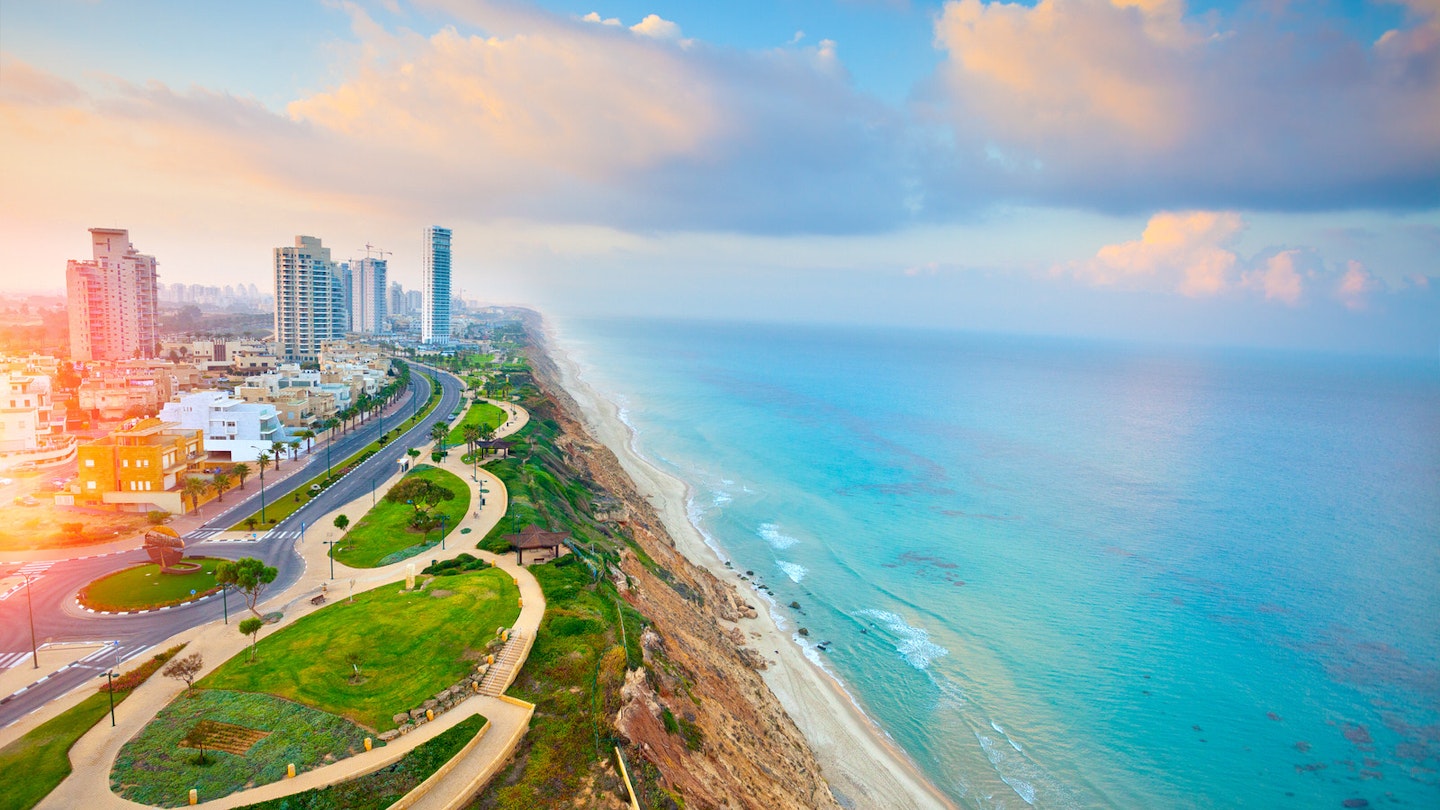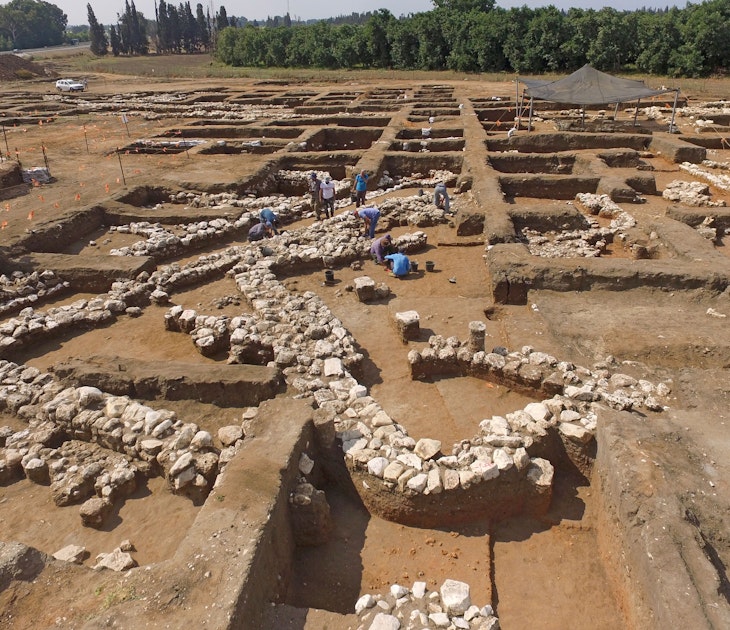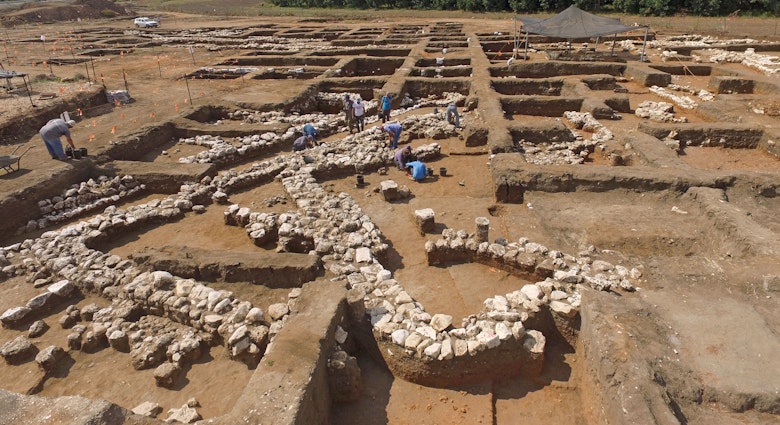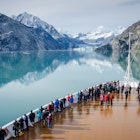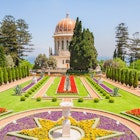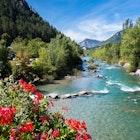The joy of driving Israel’s north coast is all about the detours. It takes just a couple of hours to zoom directly between Tel Aviv and Israel’s northwestern tip, but it’s far more rewarding to dawdle at Roman ruins, sun-drenched vineyards and maybe even a seaside micronation.
So leave Tel Aviv in your rear-view mirror: this road trip soars along the Mediterranean coast via six memorable stop-offs.
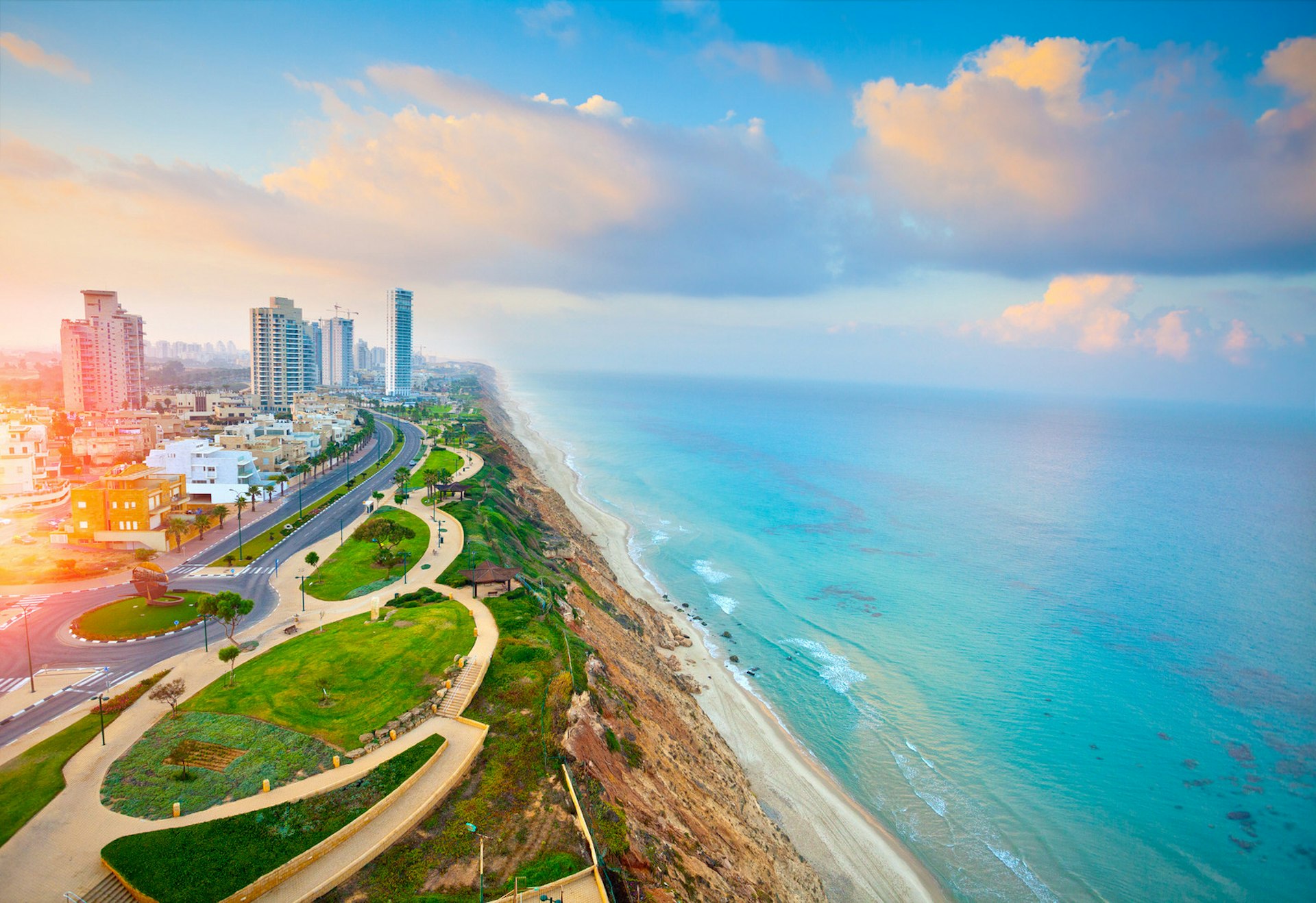
Trip back through time in Caesarea
Whether you take Rte 2 or 4, the Mediterranean Sea is largely shielded from view along the 50-odd kilometres between Tel Aviv and Caesarea, so when you pull up near Caesarea National Park, the sight of ancient stone framing sapphire water steals your breath. Here stand the weathered ruins of Caesarea Maritima. This erstwhile port city, built around 30 BCE, was the brainchild of murderous biblical tyrant Herod the Great, and anyone who didn’t like his design ideas met a bloody end. Step through the Crusader-era gate at the park’s northern entrance and ruins of Herod’s masterpiece come into view. Most striking is the opal-shaped amphitheatre where 10,000 spectators once amassed to cheer the chariots that careened around a seven-circuit race.
Swish restaurants and Israel’s only international golf club are in easy reach of the national park, but for a totally different vibe, head to the former fishing port 4km north: scruffy Jisr Az Zarka is now the only Arab seaside village in Israel. In recent years, it only topped lists of crime rates and unemployment, but Jisr Az Zarka’s fortunes are slowly transforming, largely on the back of friendly, low-slung backpacker hub Juha’s Guesthouse.

Indulge in Zichron Ya'akov’s gastronomic pleasures
As you cruise along Rte 2, it would be all too easy to miss Zichron Ya’akov. This genteel outpost of wine-drinking and art-making, 20km northeast of Caesarea, doesn’t court visitors. Unshowy yet utterly charming, central Zichron feels like a European old-town that sprang up in the Middle East.
Amble along the midrahov (pedestrian arcade), HaMeyasdim St, to feel Zichron’s pulse. Nineteenth-century stone buildings house chic cafes and restaurants, like Italy-leaning Cucina and kosher fusion restaurant Nili. Duck into alcoves and well-concealed side-streets to find studios where artisans are spinning, stitching and sculpting one-of-a-kind works.
Zichron is best understood with a glass of wine in hand. The town was established on Mt Carmel’s fertile southerly flanks in 1882. With an injection of cash from Edmond de Rothschild, part of the French banking dynasty, Zichron became a trailblazer for Israeli wine-growing culture. It’s well worth booking a tasting session at Tishbi Winery, 4km south of town, to enjoy plummy malbec and shiraz paired with homemade chocolates.
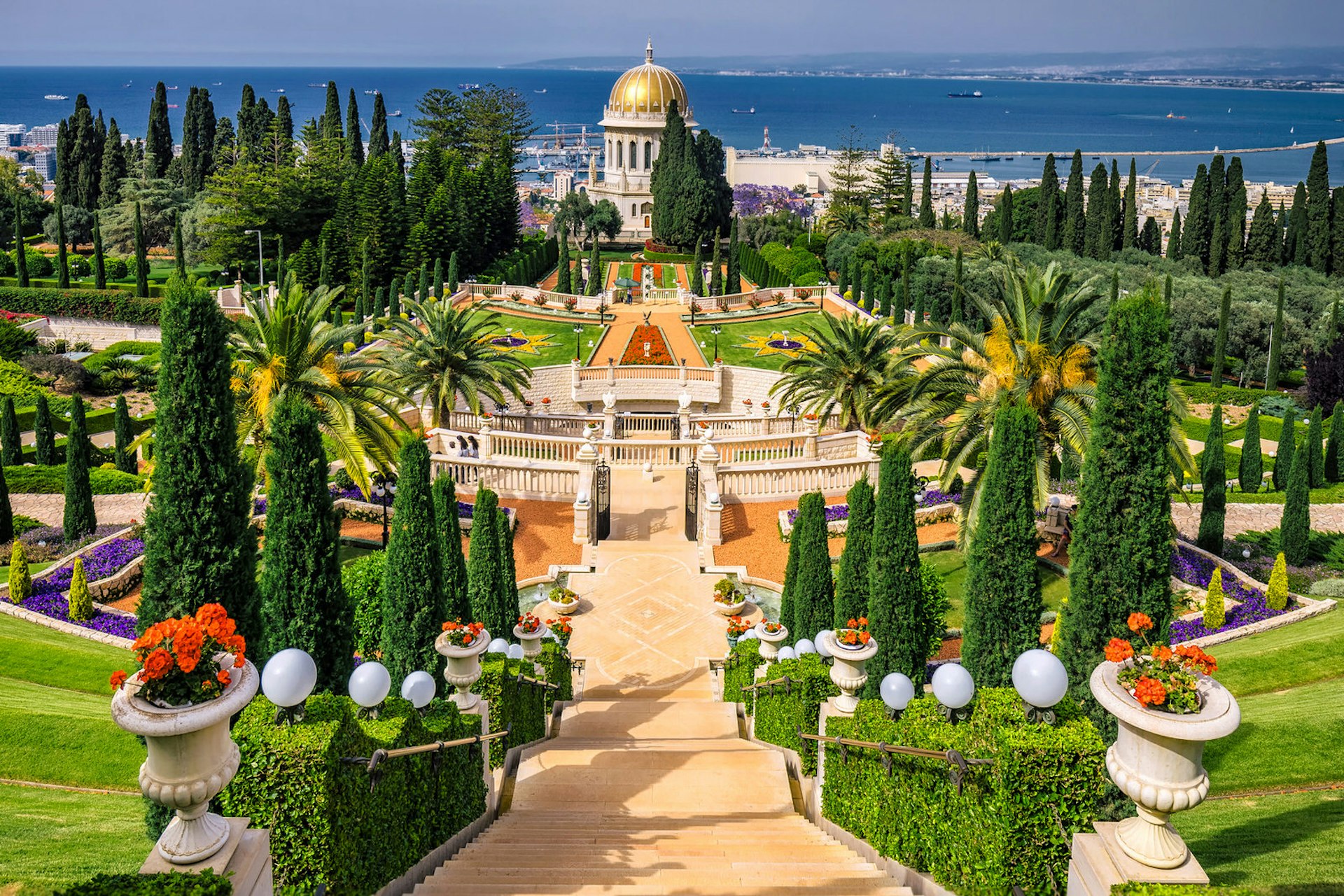
Launch yourself into many-splendoured Haifa
Leaving Zichron by Rte 2, the next 25km of sea-skirting highway is a relaxing drive, until you reach high-octane Haifa, that is. Israel’s third-largest city has a collision of architectural styles, a spirited student population, world-spanning cuisines and sizzling nightlife. Haifa’s neighbourhoods are stacked between Mt Carmel and the Mediterranean. Start at the top of the town in the Baha’i Gardens, where fountains babble, flower beds are tastefully ornamented with statues, and blades of grass appear trimmed to within a millimetre of each other. Nineteen terraced gardens flow down to a burnished shrine, in which the prophet-herald of the Baha’i faith was laid to rest.
After meandering down through the gardens, the zigzag of lanes eventually leads to Haifa’s German Colony. Stroll along the neighbourhood’s spine, Ben Gurion Ave, for a mix of Middle Eastern and European fine dining – perhaps fragrant minced beef pastries at Douzan followed by kunafeh (a warm, syrupy cheese-based dessert topped with crispy shredded pastry and pistachio) at Shtroudl, and a beer at easy-going Oak Bar. Winding east towards Wadi St, dig into Arab quarter Wadi Nisnas where scores of murals form the Museum Without Walls, a colourful open-air gallery of street art. As the sun dips, bar-hop along Masada St, chatting politics in Elika or tapping toes to the rock soundtrack in Café Puzzle. This edgy nightlife strip is a fittingly raucous end to a day in Haifa.

Get lost in labyrinthine Akko
From Haifa, Rte 4 follows a long bay to Akko (Acre), thought to be one of the world’s oldest continuously inhabited cities. Traders once rested their camels in Akko’s khans (inns), many of whose soaring archways can still be admired. As in its Ottoman heyday, the walled city’s Souq Al Abiad is still redolent with rose, incense and the salty tang of the day’s catch, though tapas and craft-beer stands are also finding space to trade here.
Crowning the old city is the 18th-century Al Jazzar Mosque, emerald-domed and bejewelled with stained glass and calligraphy. But Akko’s greatest thrills are beneath your feet, with the 350m Templars’ Tunnel and cavernous Knights’ Halls offering a glimpse into Akko’s buried Crusader past. When your head starts to spin with Akko’s centuries of history, wind down with a seafood feast at world-renowned Uri Buri.
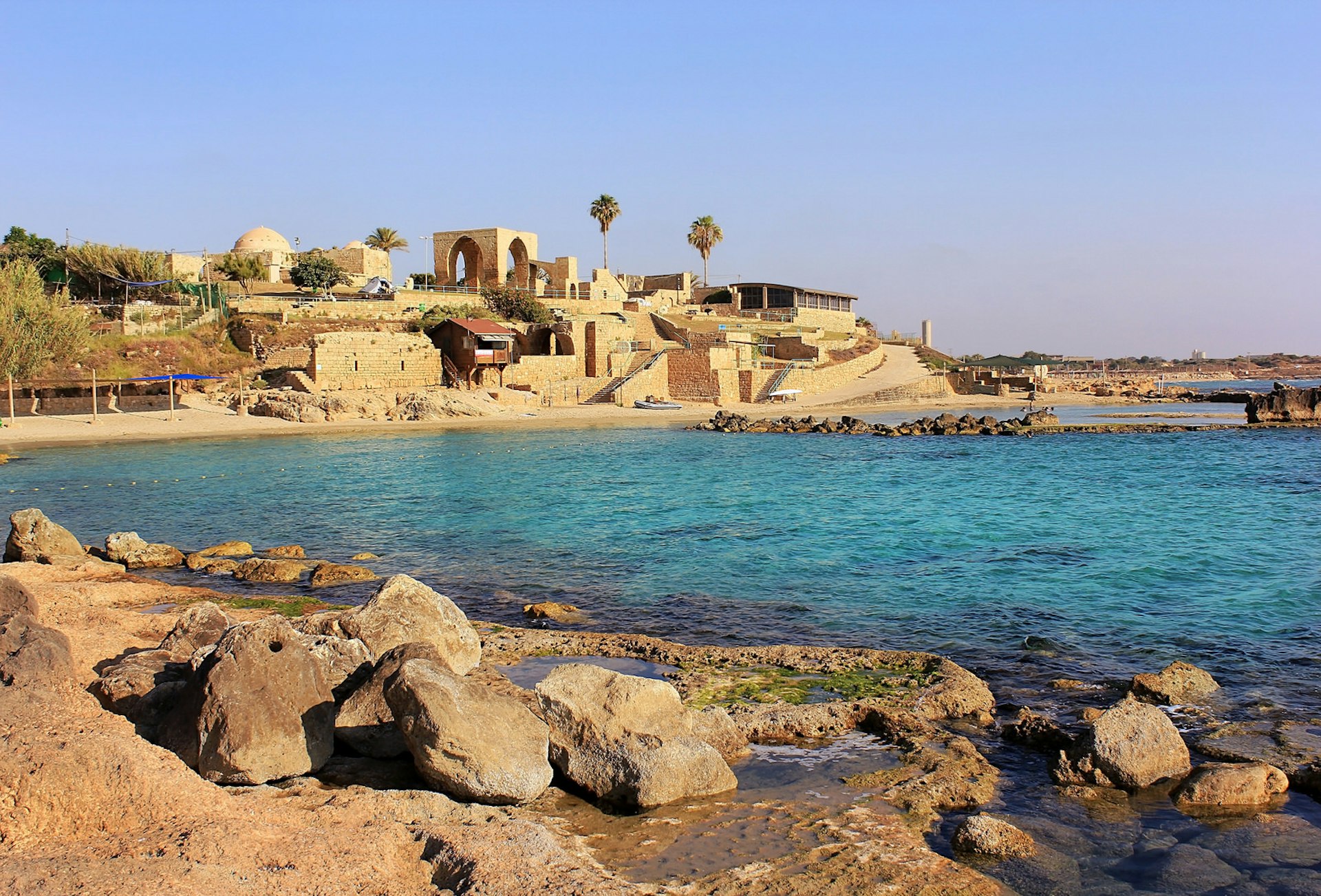
Laze amid nature Akhziv National Park
Ten kilometres beyond Akko basks the popular resort town of Nahariya, but true paradise is just a bit further north: Akhziv National Park has glassy lagoons, sheltered coves and beach campsites where families can step straight from their tents into the Mediterranean Sea. Protected under national park designation since 1968, the variegated shoreline comprises pebbled inlets, natural pools and coves spangled with starfish and sea anemones. It’s also a nesting site for loggerhead and green sea turtles, and visitors in July and August might be lucky enough to glimpse baby turtles being returned to the sea by local breeding programmes.
Almost as carefully protected is the neighbouring micronation. Follow the ‘Eli Avivi’ signs near the park’s entrance, and then a placard announces your arrival into Akhzivland. The brainchild of activist Eli Avivi, Akhzivland was created as a hippie retreat in the 1970s. Avivi declared it an independent state after he renounced Israeli citizenship, a response to the government’s attempts to fence off his land from the beach. Admire the views, peruse the museum of curios, and if you’re very lucky, you might even get a passport stamp.
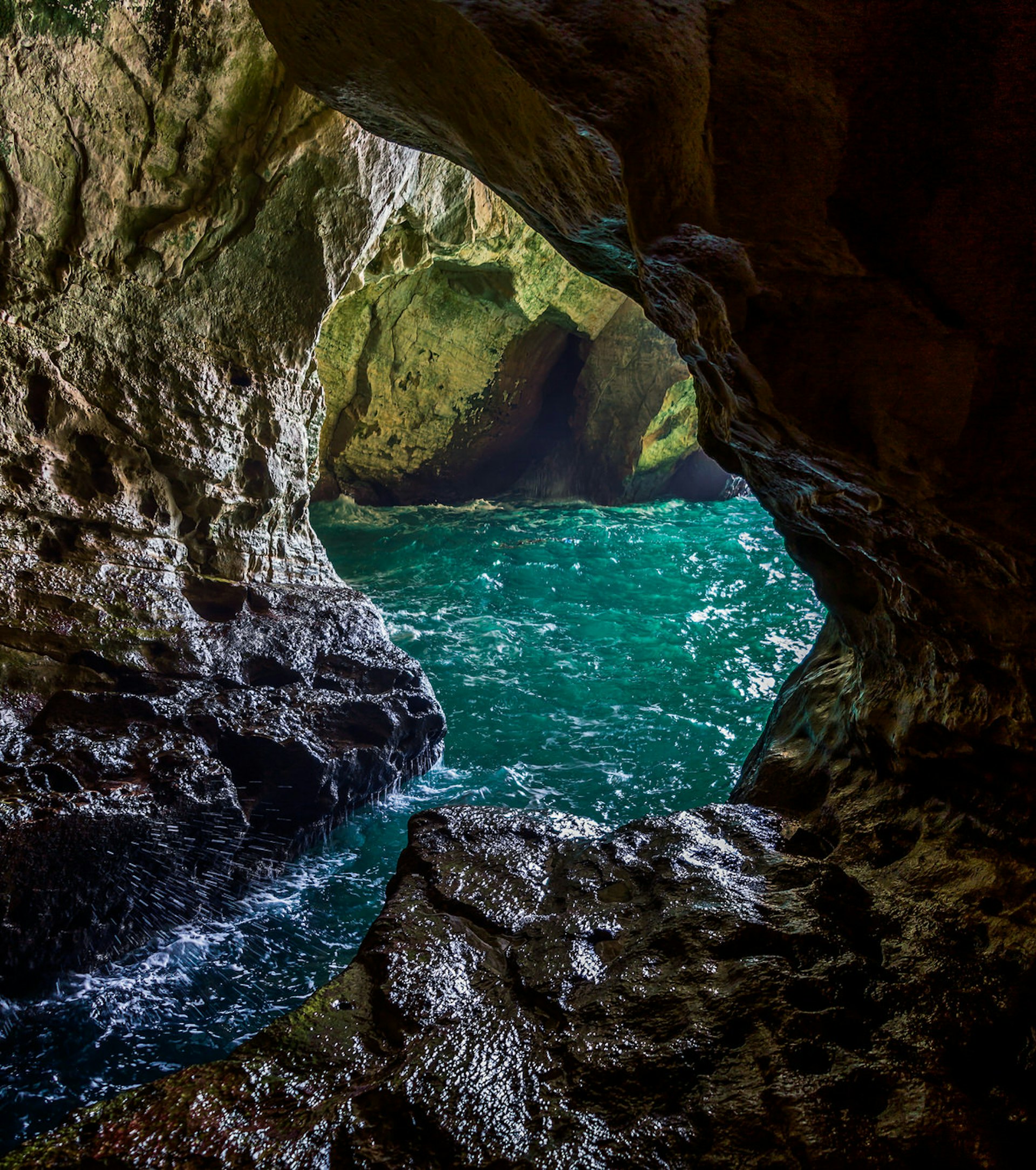
Hurtle down to the Rosh HaNikra Grottoes
Five further kilometres up the north coast are the Rosh HaNikra Grottoes, abutting the border with Lebanon. Israeli naval vessels are permanently moored in these waters. On land, gun-toting guards wave visitors into the car park. While military presence is a common sight in Israel, there’s no doubt that this border is a literal end of the road.
At this geological beauty spot, pillars of limestone resembling great dinosaur bones protrude from the sea. A cable car careens down a 60-degree gradient to reach the base of the cliffs. From here, walkways lead into caves sculpted by the tide. Rasping waves create a throaty echo inside these chalky-white chambers, the tallest of which rises 16m high. When the sea is calm, you can hear the flutter of roosting fruit bats. Cocooning you from the outside world, the caves provide a moment of pure calm at the end of your journey.

